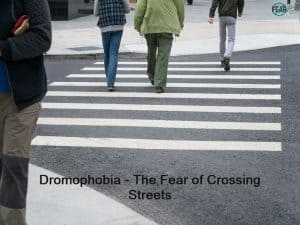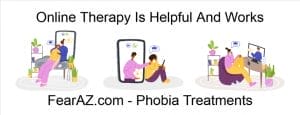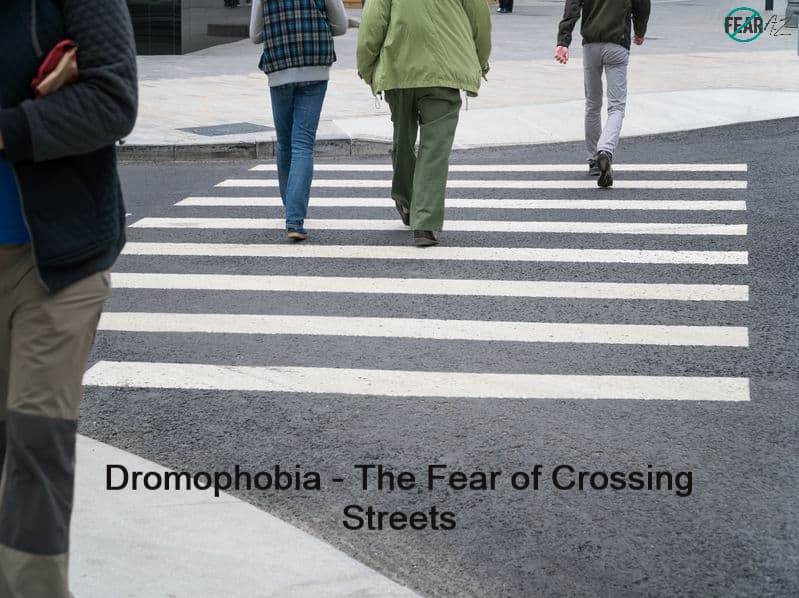Share This Article
Does Crossing Streets Scare You?
Do you dread crossing the street? Does the mere thought of crossing a street send you into a panic? You may enjoy taking walks in the park or even a stroll down the lane, but do you freeze up as soon as you meet a curb? You’re most likely to turn around at this point, regardless how much fun you’re having, or where you’re going.
If you relate to any of the above, you may have a phobia, called dromophobia or agyrophobia.
Being terrified of crossing streets is a difficult condition to manage. Imagine not being able to get to all the places you need to or want to because you cannot bear to cross the street.
To get to the root of the problem—and treat it—you must first understand what this disorder is about.
What Is Dromophobia?
Dromophobia is the excessive and irrational fear of crossing the road or streets. It is the fight-or-flight response that rears up in a person when they think about or stand in front of a crossing. This response may occur both when the phobia sufferer is alone or with a companion.

People suffering from this phobia see vehicles, busy roads, and crossroads as a serious threat to their safety. The condition could have resulted from a vehicular accident or witnessing one (e.g., having seen someone run over by a vehicle). The phobia sufferer has developed an intense fear of crossing roads or of moving vehicles. As one can imagine, this condition can be debilitating. One can lose opportunities and miss out on essential activities or social events because of the phobia.
Besides being a self-preservation tactic, dromophobia could also be inherited from a parent or a close relative. Another probable cause would be a chemical imbalance in the brain. Research suggests that people with chemical imbalances in the brain can develop anxiety disorders. Phobia is a form of anxiety disorder.
Whatever caused the phobia, having the condition can impede a person’s ability to function in society and live life to the fullest.
Dromophobia Symptoms
Being cautious of road accidents and unruly drivers is common sense. But in the case of individuals with dromophobia, the fear they experience is extreme. Thus, risk becomes overestimated, and the phobia sufferers exhibit real physical manifestations of their terror-filled mental states.
Physical Symptoms of Dromophobia
The common symptoms exhibited when the phobia is triggered include:
- Freezing
- Trembling
- Hot flashes
- Cold flashes
- Temporary paralysis
- Shock
- Elevated heart rate
- Nausea
- Diarrhea
- Loss of appetite
- Sweating
- High blood pressure
- Fainting
Psychological Symptoms of Dromophobia
- Anxiety
- Apprehensive anxiety
- Becoming hysterical
- Screaming
- Panic attack
- Depression
Self-help for Dromophobia or the Fear of Crossing Streets
How to overcome dromophobia on your own? The following options should help.
Meditation
Meditating helps with relaxation. A relaxed mind can take your thoughts off from the object of your fear. You can focus on more positive possibilities than being preoccupied with the possibility of you getting struck by a car.
Meditation can do wonders in helping you cope with your symptoms. You can also meditate through a particular “freeze moment” or when you encounter a trigger to your condition. Keep practicing meditation, and watch yourself manage your symptoms better than ever.
Breathing Exercises
Breathing exercises are great for alleviating both stress and anxiety. They can also help in coping through a bad episode. As you stand in front of the road, the pedestrian lights turn red, and the vehicles stop, take a deep breath with each step you take as you walk toward the other side of the road. Doing so will help calm your nerves.
You can repeat this exercise several times as a coping mechanism for your symptoms, and also a way to respond productively when faced with the object of your fear.
Crossing with a Companion
This is a simple yet helpful way of coping with your disorder. To get to the places you need to go to, ask a spouse, friend, or colleague to walk with you as you cross the road. Always getting help is not feasible, as you may not always have someone around. But when you are presented with this option, why not give it a try and see if it helps?
From these instances, you could possibly draw confidence from your companion, and that feeling of assurance can slowly grow to make you less scared of crossing streets without help.
Talk to Someone
Speak to loved ones and friends about your condition. Also, try getting into a community of fellow sufferers and be reminded that you are not alone. Learn how others manage their symptoms and draw some emotional support and confidence from their journeys or success stories.
Your disorder is most likely taking a toll on your loved ones too. It is important to speak to them and help them understand what you are going through and how they can help. Having someone you can discuss your thoughts and feelings with is crucial to avoid depression or self-isolation resulting from the phobia.
Physical Exercise
Exercise has been proven effective in dealing with stress and anxiety symptoms. Engaging in physical activities releases ‘feel-good’ chemicals called endorphins, which can help alleviate your mood.
Keep in mind that the exercise need not be excessive. Light aerobic exercises can make enough difference in your physical and mental well-being.
Good Diet
Practice good diet habits and avoid foods that can worsen your symptoms. For instance, coffee has caffeine—a stimulant that can increase anxiety. Taking proper care to eat the right things would help tremendously with coping through your treatments.

Professional Help for Dromophobia
Exposure Therapy
This involves gradually exposing the patient to their phobia triggers, in a controlled environment, until they can confront their fears on their own. The therapist may begin by asking patients to visualize themselves crossing the road, first with a companion and then on their own. Eventually, the therapist may facilitate an exercise involving the patients crossing the street while the doctor watches.
Exposure therapy is a popular, long-term treatment and has been proven to produce good results.
Cognitive Behavioral Therapy (CBT)
CBT involves having patients examine and reflect on their own mental and emotional processes. The aim is to help patients develop coping skills and learn ways on how to modify their way of thinking and responding to the object of their fear.
Dialectical Behavior Therapy (DBT)
This long-term dromophobia treatment therapy serves to provide patients with many tools and strategies on how to cope and even keep their symptoms at bay. Some of the techniques involved in DBT include, among others: half-smiling; mindfulness meditation; and coping ahead. All DBT exercises aim to teach the patients how to apply all that they learned during the sessions in real life, especially in situations that could trigger their condition.
Overcoming dromophobia is difficult. But once you’ve decided to take it on, keep in mind that you’re not alone. Don’t be afraid to reach out to the people you trust the most—they’ll lend a helping hand. If you’re ready, getting professional help is also encouraged. In no time, you’ll be able to catch up on all the things you’ve missed on the other side of the road.



